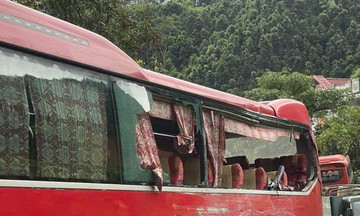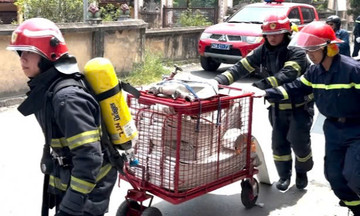Tran Ngoc Thanh, 45, a driver who provides passenger transport services from Dong Nai to Ho Chi Minh City, always feels suffocated whenever he passes National Highway 51 and then gets on the Long Thanh - Dau Giay expressway. The route is less than 60 km long, with a speed limit of 120 km/h, but many days it takes him two hours, or even three hours if the expressway is under repair or there's a collision.
Having driven trucks carrying goods from the wholesale market in Ho Chi Minh City to Long Thanh, Dong Nai, for nearly 10 years before switching to a 7-seat passenger car service, Thanh says that traffic jams on the Long Thanh - Dau Giay expressway are becoming increasingly frequent and severe. Hotspots like the National Highway 51 interchange, Long Thanh bridge, and An Phu bridge experience frequent congestion, even during non-peak hours and weekends.
"Before each trip, I always check the map or go online to update traffic jam information on the expressway to avoid them, but there aren't many alternative routes. If I go towards National Highway 51 and cross the Dong Nai bridge, not only is the distance longer, but traffic jams are also constant," he said, adding that when Long Thanh airport opens, the risk of traffic jams will increase if the expressway isn't expanded in time or if there are no other access routes.
 |
Prolonged congestion at the entrance to the Long Thanh - Dau Giay expressway during its closure for repairs, 7/2025. Photo: Quynh Tran |
Prolonged congestion at the entrance to the Long Thanh - Dau Giay expressway during its closure for repairs, 7/2025. Photo: Quynh Tran
Sharing the same predicament, many other drivers who regularly transport passengers from Long Thanh to Tan Son Nhat airport also struggle on their journeys. To avoid traffic jams, many drivers take a detour via National Highway 51, following National Highway 1K and then turning onto Pham Van Dong Boulevard, but it's not much better. Recently, the Ho Chi Minh City - Dau Giay expressway underwent expansion joint repairs near the Long Thanh bridge, causing congestion. Many drivers spent 8-10 hours on the over-100-km journey from Ho Chi Minh City to Vung Tau (passing Long Thanh airport).
Built on an area of 5,000 ha with a total investment of over 336,000 trillion VND, Long Thanh is the largest airport in the country, implemented in three phases. The first phase aims for basic completion by the end of this year, with operations starting in 2026, serving 25 million passengers and 1.2 million tons of cargo annually. The airport not only serves travel needs but is also a growth pole for the Southern Key Economic Zone, in which Ho Chi Minh City plays a central role.
However, the road connection from the city to Long Thanh currently relies on two main routes: the Long Thanh - Dau Giay expressway and National Highways 1 and 51, which are already severely overloaded. Other vital routes connecting to the airport, such as the Ben Luc - Long Thanh expressway and Ring Road 3, are under construction, while many projects like the Thu Thiem - Long Thanh railway and the metro connecting to Tan Son Nhat airport are still in the planning or research stages.
"If the connecting infrastructure isn't completed in a synchronized manner, traffic pressure will continue to mount on existing routes when the airport is put into operation," warned architect Ngo Viet Nam Son.
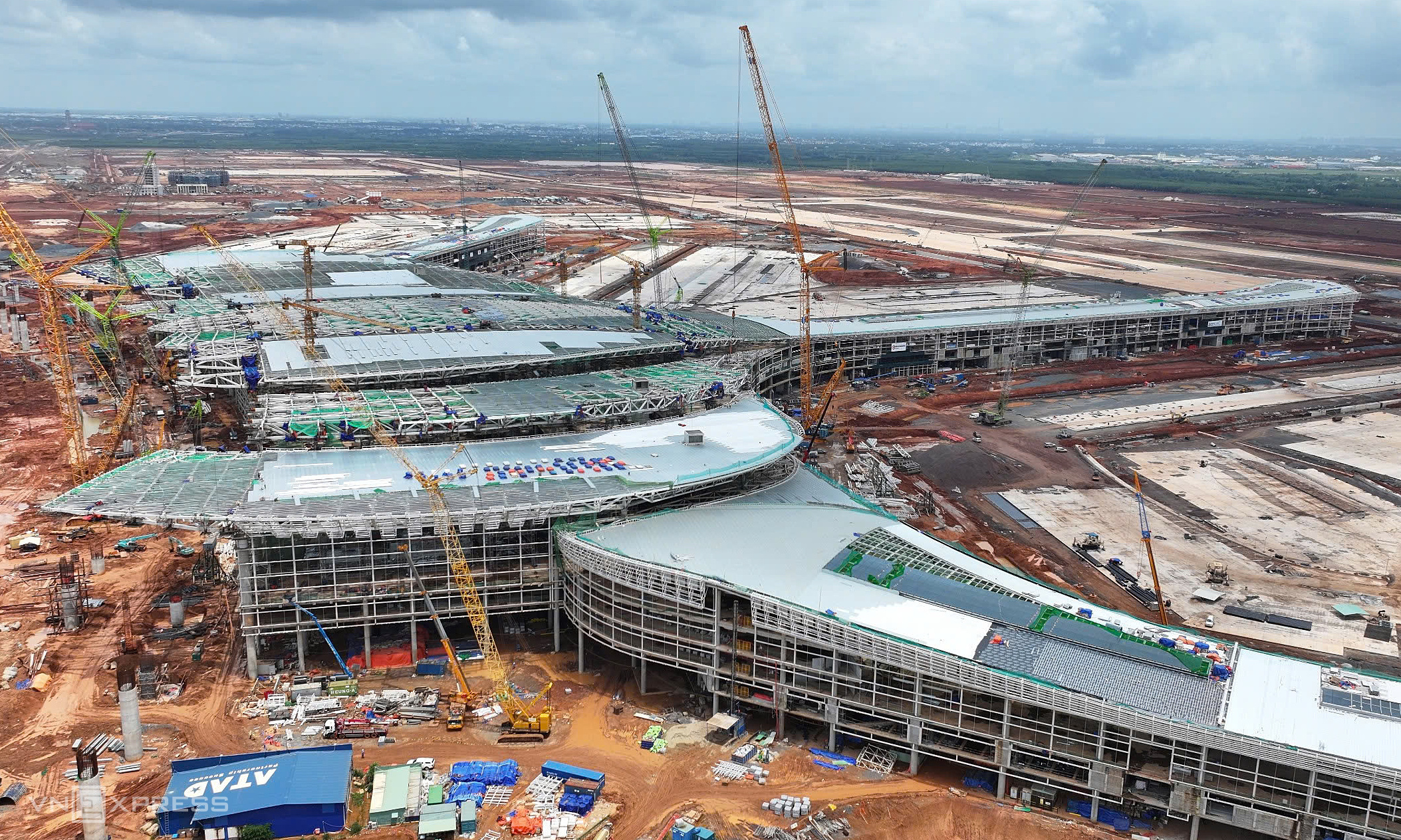 |
Long Thanh Airport construction site, 7/2025. Photo: Phuoc Tuan |
Long Thanh Airport construction site, 7/2025. Photo: Phuoc Tuan
According to Son, Long Thanh airport is planned within a comprehensive development cluster, including transportation connecting major urban centers, tourism destinations, and industrial zones throughout the region. Although the planning has been in place early on and is relatively well-organized, the implementation plan lacks synchronization, potentially creating an imbalance between the airport's construction progress and the connecting infrastructure. Therefore, it is urgent to review the projects, prioritize them, and focus on implementation, ensuring completion coincides with the opening of Long Thanh airport.
"In the immediate future, it is necessary to accelerate the progress of the Ben Luc - Long Thanh expressway, expand the Long Thanh - Dau Giay route and Ring Road 3. At the same time, Ring Road 4, which has been approved by the National Assembly, also needs to be implemented soon before waiting for large, long-term projects like the metro," Son suggested.
Sharing the same view, Dr. Dinh The Hien, an urban economist, emphasized the urgent need to quickly complete the ring roads and expressways connecting the airport. According to him, any project needs time to operate stably. Long Thanh, after completion, is expected to achieve high operational efficiency by 2027 or 2028. This is also the time when many large projects such as Ring Road 3, the Long Thanh - Dau Giay expressway, Ben Luc - Long Thanh, and Bien Hoa - Vung Tau will be in operation, creating a connected transportation framework.
"However, to support connecting flights between domestic and international routes, in the initial phase, it's necessary to organize reasonable bus routes, ensuring convenience and efficiency," Hien suggested.
Earlier, according to the plan of Vietnam Expressway Development Investment Corporation (VEC), the expansion of the Long Thanh - Dau Giay expressway is scheduled to begin on 19/8. The upgrade section, nearly 22 km long, from the Ring Road 2 interchange in Ho Chi Minh City to the Bien Hoa - Vung Tau expressway, is expected to be substantially completed in 2026 with 8-10 lanes. Along with this project, Ho Chi Minh City is about to expand more than 3 km of access roads to synchronize with the main route and the An Phu intersection, removing the bottleneck connecting to Long Thanh airport.
In addition, nearly 30 km of the Ben Luc - Long Thanh expressway has been put into operation by VEC, and the entire route is expected to open in 2026, creating a vital artery connecting to the airport. This route will also help alleviate pressure on the Long Thanh - Dau Giay expressway and reduce congestion in the inner city of Ho Chi Minh City because vehicles won't have to take detours.
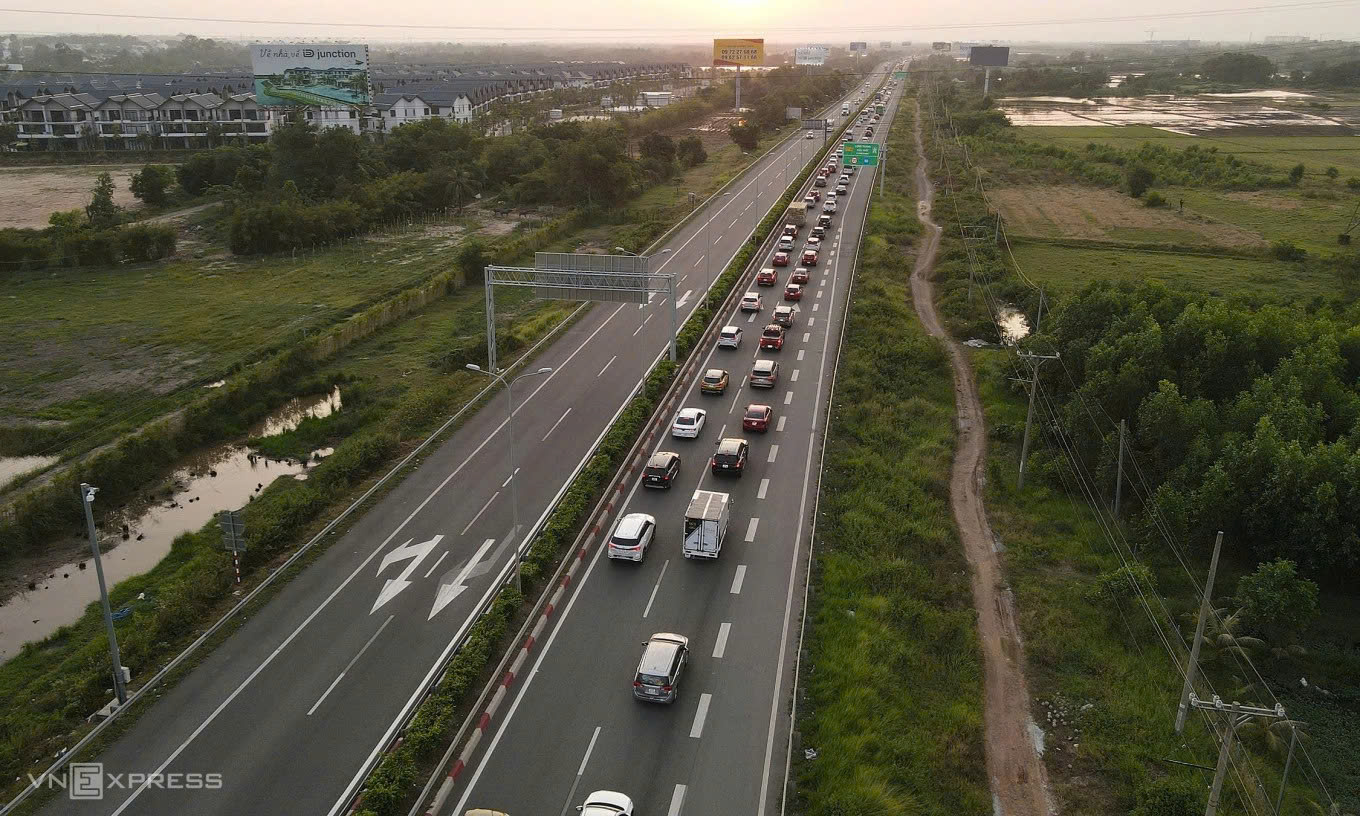 |
Congestion on the Long Thanh - Dau Giay expressway, 4/2025. Photo: Phuoc Tuan |
Congestion on the Long Thanh - Dau Giay expressway, 4/2025. Photo: Phuoc Tuan
At a recent conference on transportation connecting to Long Thanh, Assoc. Prof. Dr. Tran Quang Phu, Vice-President of Ho Chi Minh City University of Transport, stated that the airport is of international scale and is also oriented to be an airport city. Therefore, road connections alone are not sufficient; this location needs a multimodal transport network, including metro, rapid bus, high-speed rail, waterways, and an intelligent operating system, similar to airports like Incheon (South Korea) and Schiphol (Netherlands).
"The connecting axes also need to be developed according to a transit-oriented development (TOD) model to optimize land resources and create development momentum," Phu said.
In the regional railway development plan, the Ben Thanh - Suoi Tien metro line is intended to be extended, connecting to Dong Nai's metro network in Bien Hoa. The national railway will have the Thu Thiem - Long Thanh line and the North-South high-speed railway, enhancing regional connectivity and supporting passenger transport to the airport. In addition, a metro connection between Tan Son Nhat airport and Long Thanh is also being studied.
Among these projects, the Thu Thiem - Long Thanh railway is considered the "backbone," playing a key role in transferring passengers from other lines to the airport. This line has a total length of over 48 km, responsible for transporting large volumes of passengers, with a total estimated investment of about 3.5 billion USD, equivalent to over 84,000 trillion VND.
The Ministry of Construction is completing the pre-feasibility study report for this project, which is expected to be submitted to the National Assembly for investment approval in 10/2025. If approved, the line is expected to be built from late 2026 to 2029 and begin commercial operations in 2030. Ho Chi Minh City will be the lead agency for implementation.
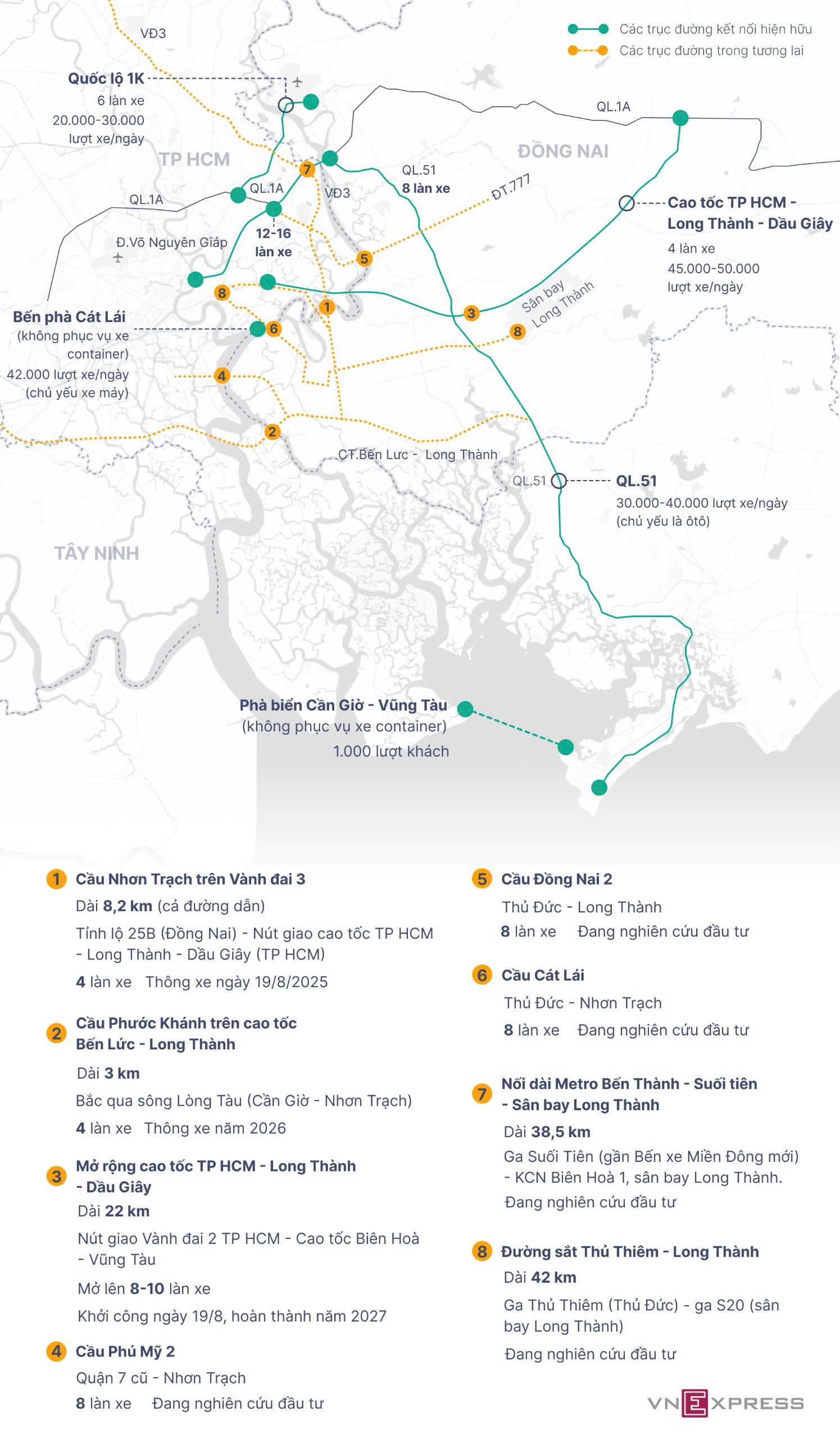 |
Current status and future connection routes between Ho Chi Minh City and Dong Nai. Graphics: Khanh Hoang |
Current status and future connection routes between Ho Chi Minh City and Dong Nai. Graphics: Khanh Hoang
Locally, to connect directly to Long Thanh airport, Dong Nai province started construction on the 2-km Provincial Road 25C at the end of 2024, connecting routes T1, National Highway 51, and rural road 19. Along with that, Road 25B is being upgraded. When put into operation, these routes will link the airport with Ring Road 3, the Ben Luc - Long Thanh and Bien Hoa - Vung Tau expressways, and Ring Road 4, which is in preparation for implementation.
Working with the Prime Minister on 2/8, Vo Tan Duc, Chairman of the Dong Nai People's Committee, said the locality is accelerating the progress of infrastructure projects passing through the area to ensure connectivity with the airport when it comes into operation. Two important routes, the Bien Hoa - Vung Tau expressway and Ring Road 3, are targeted for technical completion before 19/12 this year and operation from 2026. Dong Nai is also completing procedures to soon implement provincial roads 770B and 773, and expand provincial road 769, creating links between the airport and other areas within the province.
Phuoc Tuan - Giang Anh










